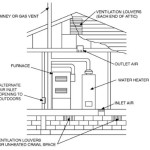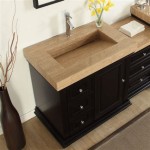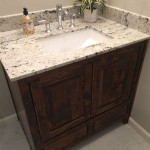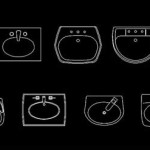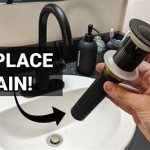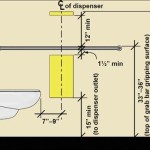How To Install Vinyl Sheet Flooring In Bathroom
Vinyl sheet flooring represents a practical and cost-effective solution for bathroom flooring. Its water resistance, durability, and ease of maintenance make it a popular choice among homeowners. Successful installation, however, hinges on careful preparation and adherence to best practices. This article provides a comprehensive guide to installing vinyl sheet flooring in a bathroom, covering essential steps from preparation to finishing touches.
Before commencing the installation, it is crucial to gather all necessary tools and materials. This proactive approach will minimize interruptions during the process and ensure a smoother workflow. Essential tools include a utility knife, a measuring tape, a straight edge (ideally a metal ruler or T-square), a pencil or marker, seam sealer (if required based on the sheet size and bathroom dimensions), a notched trowel (if adhesive is required), flooring adhesive (if required), a seam roller, and a vacuum cleaner or broom. Protective gear such as gloves and safety glasses is also recommended.
The required materials consist primarily of the vinyl sheet flooring itself. The quantity should be calculated based on the bathroom's dimensions, adding extra material for waste and complex cuts around fixtures. Other necessary materials may include underlayment (if desired or recommended by the manufacturer), seam sealer, and flooring adhesive. The adhesive type should be chosen specifically for vinyl sheet flooring and the existing subfloor material.
Preparation is Paramount
The foundation of a successful vinyl sheet flooring installation lies in thorough preparation of the subfloor. The subfloor must be clean, level, and dry. Any existing flooring, such as tile, linoleum, or carpet, must be completely removed. Inspect the subfloor for any signs of damage, such as cracks, holes, or water stains. Minor imperfections can be filled with a patching compound specifically designed for floor repairs. Larger issues may necessitate replacement of sections of the subfloor.
If the subfloor is uneven, it is imperative to level it before installing the vinyl sheet. Apply a self-leveling compound according to the manufacturer's instructions. Allow the compound to dry and cure completely as specified. Once dry, inspect the surface for any remaining irregularities and address them accordingly. A smooth, level subfloor is essential for preventing bumps and dips in the finished vinyl floor, ensuring its longevity and aesthetic appeal.
Clean the prepared subfloor meticulously. Use a vacuum cleaner to remove all dust, debris, and remnants of patching compound. If necessary, wipe down the surface with a damp cloth to remove any lingering dirt. Ensure the subfloor is completely dry before proceeding with the next step. A clean surface promotes proper adhesion of the vinyl sheet and prevents the entrapment of dirt and debris, which could compromise the floor's integrity.
Acclimation of the vinyl sheet flooring is also a critical step in the preparation process. Unroll the vinyl sheet in the bathroom at least 24 to 48 hours before installation. This allows the material to adjust to the room's temperature and humidity, minimizing expansion or contraction after installation. Failure to acclimate the vinyl sheet can lead to buckling or gapping along the edges.
Precise Measurement and Cutting
Accurate measurement is crucial for minimizing waste and ensuring a proper fit. Using a measuring tape, carefully measure the length and width of the bathroom at its widest points. Add a few extra inches to these measurements to account for trimming and potential errors. It is always preferable to have slightly more material than needed rather than falling short.
Transfer the measurements to the vinyl sheet flooring, using a straight edge and a pencil or marker to draw cutting lines. Pay close attention to the pattern of the vinyl, if applicable, to ensure it is aligned correctly. When cutting around fixtures such as toilets, sinks, and pipes, create a template using paper or cardboard. Trace the outline of the fixture onto the template and then transfer the template onto the vinyl sheet. This method allows for more precise cuts and minimizes the risk of errors.
Employ a sharp utility knife with a fresh blade for cutting the vinyl sheet. Make multiple shallow passes rather than attempting to cut through the material in one stroke. This technique reduces the likelihood of tearing or damaging the vinyl. Use the straight edge as a guide to ensure clean, straight cuts. For curved cuts around fixtures, carefully follow the traced template, making small, controlled cuts.
Once the vinyl sheet is cut to size, dry-fit it in the bathroom to check the fit. Carefully position the sheet, ensuring it aligns with the walls and fixtures. Identify any areas where adjustments are needed and trim the vinyl accordingly. This dry-fitting process allows for fine-tuning of the cuts before applying adhesive.
Installation and Sealing
Depending on the manufacturer's instructions and the size of the bathroom, adhesive may be required. Small bathrooms might sometimes employ a "loose lay" installation where the vinyl is held in place by the perimeter trimming, larger installations typically require full adhesive application. If adhesive is necessary, select a suitable flooring adhesive specifically designed for vinyl sheet flooring and the existing subfloor material. Read and follow the manufacturer's instructions carefully regarding application techniques and drying times.
Apply the adhesive to the subfloor using a notched trowel, spreading it evenly across the surface. Work in manageable sections to prevent the adhesive from drying before the vinyl sheet is laid. Carefully lower the vinyl sheet onto the adhesive, ensuring it is properly aligned. Gently press the vinyl sheet into the adhesive, working from the center outwards to eliminate air bubbles and ensure full contact with the subfloor.
Use a seam roller to firmly press the vinyl sheet along the edges and seams. This helps to ensure a strong bond between the vinyl and the subfloor, preventing lifting or peeling. Pay particular attention to areas around fixtures and doorways, where the vinyl is more likely to be subjected to wear and tear.
For installations requiring seams, such as in larger bathrooms, use a seam sealer to create a waterproof and durable bond between the edges of the vinyl sheets. Apply the seam sealer according to the manufacturer's instructions, ensuring it penetrates the seam thoroughly. Wipe away any excess sealer from the surface of the vinyl. Allow the seam sealer to dry completely before subjecting the floor to moisture or heavy traffic.
Once the vinyl sheet is installed and the adhesive (if used) has dried completely, install baseboards or moldings around the perimeter of the room to conceal the edges of the vinyl and create a finished look. Attach the baseboards or moldings using nails, screws, or adhesive, ensuring they are securely fastened to the wall. Caulk any gaps between the baseboards and the wall to prevent water from seeping behind the vinyl.
Clean the newly installed vinyl floor thoroughly. Use a soft broom or vacuum cleaner to remove any dust or debris. Wipe down the surface with a damp cloth and a mild detergent specifically designed for vinyl floors. Avoid using harsh chemicals or abrasive cleaners, as these can damage the vinyl's surface. Allow the floor to dry completely before replacing any bathroom fixtures or furniture.
Proper maintenance is essential for prolonging the life of the vinyl sheet flooring. Regularly sweep or vacuum the floor to remove dirt and debris. Wipe up spills immediately to prevent staining. Use floor mats at entrances to minimize dirt and moisture from being tracked onto the floor. Avoid dragging heavy objects across the floor, as this can scratch or dent the vinyl. Periodically clean the floor with a mild detergent and water to maintain its appearance.

How To Install Sheet Vinyl Floor Decor Adventures

How To Install Vinyl Plank Flooring In A Bathroom Fixthisbuildthat

How To Install Vinyl Sheet Flooring A Erfly House

How To Install Vinyl Sheet Flooring A Erfly House

How To Install Vinyl Sheet Flooring A Erfly House

How To Install Sheet Vinyl Floor Decor Adventures

How To Lay Vinyl Floor In A Bathroom Dove Cottage

Vinyl Sheet Floor Installation

How To Install Vinyl Sheet Flooring

How To Lay Sheet Vinyl Flooring
